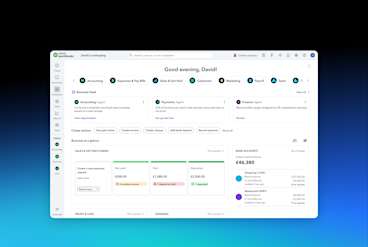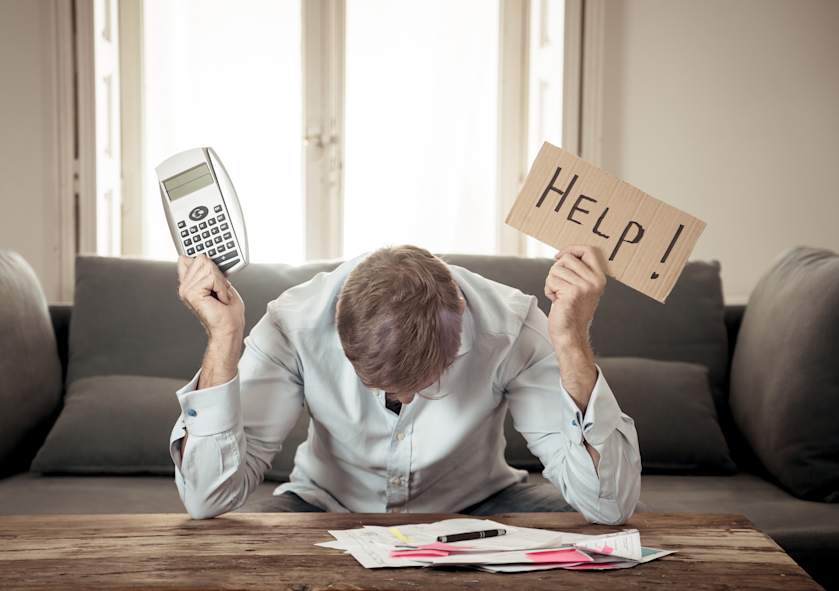
Cloud accounting
Automation vs AI vs Agentic: What every accountant should know
Simple, smart accounting software - no commitment, cancel anytime

TAX AND PENSIONS
As a small business owner, one of the first taxes you’re likely to come across is VAT. It’s a tax that can cause some confusion, so it’s useful to have the VAT basics explained. Although VAT is generally straightforward, there are some tricky areas, so do take advice from an accountant.
Value-Added Tax, commonly known as VAT, is a tax that is charged on the purchase of goods and services and other taxable supplies. It is added to the cost of just about everything you buy in the UK, with a few exceptions. As a business, you may be required to register for and collect VAT on behalf of the government. You can also claim back the VAT that you’ve had to pay on business supplies.
VAT applies to you as soon as your sales of VAT-taxable goods and services exceeds £85,000 (the VAT threshold). This is true whether you are selling goods or services, and whether you are trading as a limited company or sole trader.
If you reach this threshold in a 12-month period, or know you will reach it, you have to register for VAT. Note that you can register voluntarily below this limit, and generally you should register if most of your customers are themselves VAT-registered.
You can only charge VAT if your business is registered for VAT.
When your business is registered for VAT, you effectively become a tax collector for HMRC. You have to charge VAT on sales (known as outputs), and you can reclaim VAT incurred on expenses (known as inputs). You then need to pay to HMRC the difference between the VAT collected on sales less the VAT incurred on purchases, usually on a quarterly basis.
The issue for you as a small business is making sure you understand that money collected on behalf of the government doesn’t belong to you – you shouldn’t use this cash to fund the business. HMRC is very unsympathetic when VAT isn’t paid on time, so consider opening a separate bank account to transfer an estimate of the VAT due to help stop you spending it.
VAT is added to the price of most goods and services that are bought by consumers. That includes everything from the majority of the products you would buy on the high street to domestic services such as decorating or plumbing (as long as the firm is registered for the tax).
VAT is not charged at the full rate of 20% on all items. For example, domestic gas and electricity incur VAT at a reduced rate of 5%. Other products, such as children’s clothing, books and most food, have a VAT rate of 0%, so no tax needs to be paid.
There are three different rates of VAT. You must make sure that you charge the correct rate based on the products and services you sell. These rates can vary from year to year and you must apply the new rates from the date any changes are made.
Standard rate (20%) - Most goods and services incur the standard rate of VAT.
Reduced rate (5%) - The reduced rate is charged on domestic power, energy-saving measures, sanitary products, children’s car seats and mobility aids.
Zero rate (0%) - Goods that incur the zero rate of VAT must still be recorded on your VAT accounts and reported on your VAT return. Examples include most food, books, newspapers and children’s clothes.
As well as the three rates of VAT that can be charged, some goods and services, such as financial and property transactions, are VAT exempt. No VAT is charged on these items and they do not need to be recorded on your VAT accounts.
You should register online with HMRC. You will be able to create a VAT online account (also known as a “Government Gateway account”) which you will need to submit your VAT Returns to HMRC.
You could appoint an accountant (or agent) to submit your VAT returns and deal with HMRC on your behalf. You’ll have to pay for this service but it will save you a lot of time and administration.
Most businesses are required to submit a VAT return to HMRC every three months. This period is known as your ‘accounting period’. VAT returns should be submitted to HMRC online via your Government Gateway account and any VAT that you owe must be paid electronically. The due date for your VAT return to be submitted and any VAT you owe to be paid is usually one month and seven days after the end of the accounting period.
In April 2019 the new Making Tax Digital (MTD) regulations came into force for VAT-registered businesses with a turnover of £85,000 and more.
From April 2022, all VAT registered businesses, regardless of turnover, will need to submit their VAT return online and record all VAT transactions digitally. So it makes sense to register online as soon as possible.
Registering for VAT could mean more administration for you, so it pays to get organised from the start and be ready for the full rollout of MTD in April 2022.
Quarterly returns: You will save so much time using accounting software for your quarterly returns rather than trying to work out your VAT on Excel. Make sure you choose software that is MTD compatible such as QuickBooks Online.
Inspections: You are pretty likely to get a VAT inspection at some point. It will be much easier for you if all your records are on one accounting package (and remember you need to keep your supporting invoices for at least six years).
Pre-registration expenses: There is some scope to reclaim VAT on goods and services your business bought before registering for VAT. You will only be able to do this if you have the VAT invoice.
Invoicing: Your invoices will need to contain the right information in order to be deemed VAT invoices. If you use accounting software to handle your invoicing you won’t need to worry about this.
HMRC are genuinely very helpful with comprehensive VAT guides for businesses.
They also have a dedicated telephone helpline on 0300 200 3700.
Definitely talk to an accountant if it is your first time administering VAT. Most businesses are straightforward but there may be some tricky issues you are unaware of. You can find an accountant near you here.
Did you find this article explaining the basics of VAT? The QuickBooks Blog covers many more topics. It’s all part of the support we offer to small businesses in the UK.
Subscribe to get our latest insights, promotions, and product releases straight to your inbox.
9.00am - 5.30pm Monday - Thursday
9.00am - 4.30pm Friday